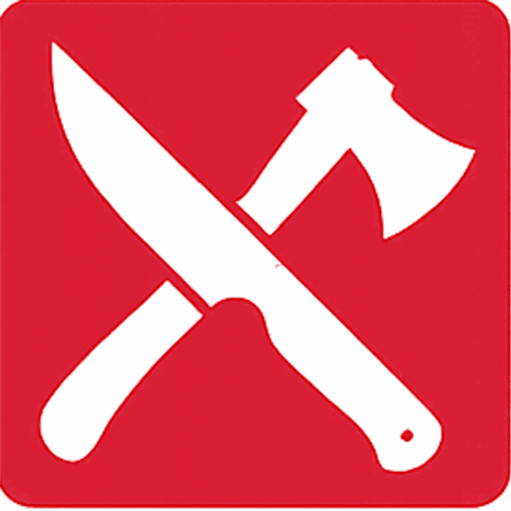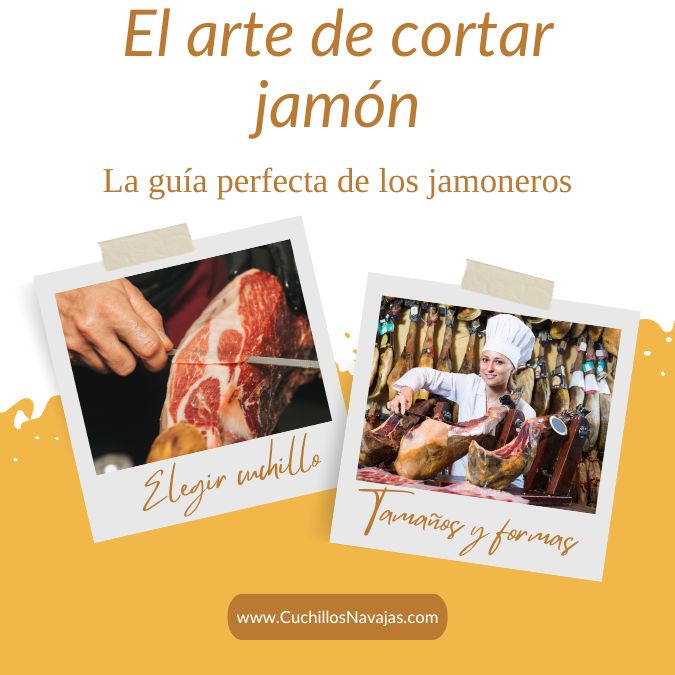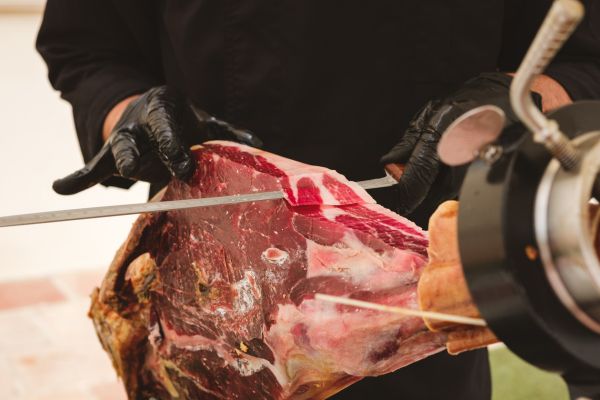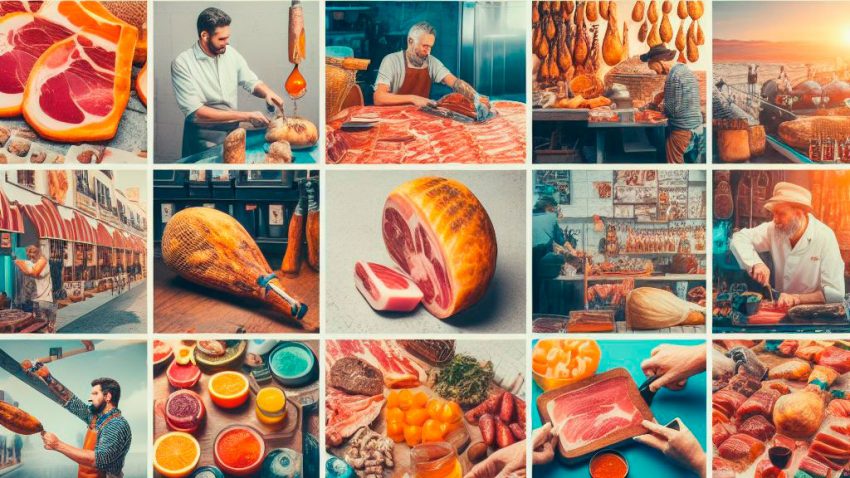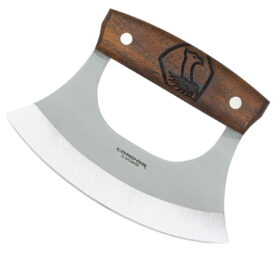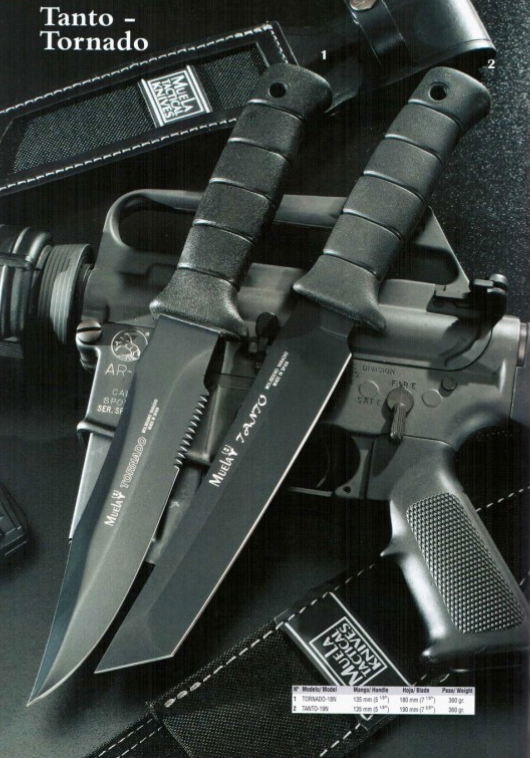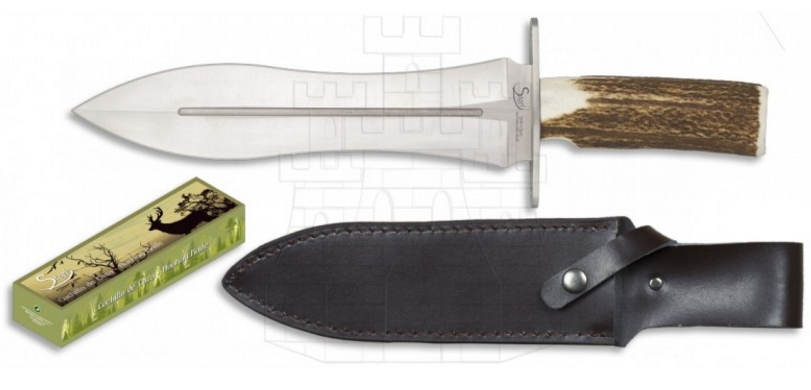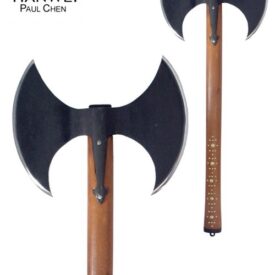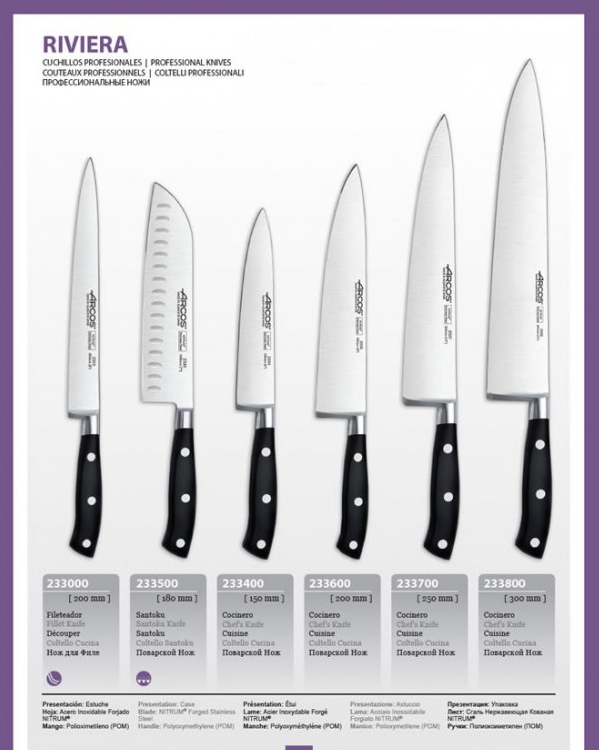The art of carving ham transcends the simple action of slicing; it is a revered practice that encapsulates history, culture, and culinary passion. In many cultures around the world, ham is considered not only a food but also a symbol of festivity, gathering, and tradition. However, it is in Spain where this art reaches its peak, becoming an integral part of its rich gastronomy. Spanish ham, especially the Iberian variety, is globally celebrated for its exquisite flavor, unique texture, and the meticulous curing process it demands.
How to Choose the Perfect Ham Carving Knife: A Comprehensive Guide
Achieving perfect slices of ham is not just a matter of skill and technique; it is also a form of respect towards the product and its heritage. Each thin and uniform slice not only enhances the sensory experience of the taster, allowing the ham to melt smoothly in the mouth, but also honors the time, effort, and tradition invested in its creation. Therefore, the ham carving knife is not merely a tool but the essential companion of the cutter, an instrument that should be chosen with as much care as the ham itself.
Recognizing the importance of this art, our guide aims to be a compass for those in search of the perfect ham carving knife, blending the wisdom passed down by generations of master ham carvers with the practical advice of contemporary experts. From choosing the blade and handle to maintaining knife balance and sharpness, each aspect is addressed with the aim of empowering the reader, allowing them not only to make an informed choice but also to deepen their appreciation for the art of ham carving. This guide is a tribute to tradition and an invitation to participate in the culinary celebration that ham represents.
Blade Size and Shape
The ham carving knife, an emblematic tool in the art of slicing ham, is distinguished by its unique design, meticulously crafted to fulfill a very specific task: slicing thin and delicate slices of ham, preserving its integrity, and enhancing its flavor. The blade of this knife, notably long, narrow, and endowed with exceptional flexibility, is the result of careful culinary engineering. This flexibility is not accidental; it allows the cutter to maneuver precisely along the ham, following its natural contour and avoiding waste, while ensuring that each slice maintains perfect consistency.
The length of the blade, ideally ranging between 24 and 30 centimeters, is another critical aspect of its design. This dimension is not arbitrary; it responds to the need to adapt to the varied shapes and sizes of Iberian hams and shoulders, allowing for long, continuous cuts that maximize the beauty and flavor of each piece. The choice of blade length is therefore a balance between versatility and precision, offering the cutter the ability to address both large and smaller pieces with equal effectiveness.
Regarding the blade surface, traditional preference leans towards smooth blades. Master ham carvers value this type of blade for the superior control it offers during cutting, allowing for a more intimate and direct interaction with the ham. The smooth blade acts almost like an extension of the cutter’s hand, responding to each movement and pressure with precision, resulting in slices of unparalleled uniformity and delicacy.
However, innovation in ham carving knife design has introduced serrated blades as a valuable alternative. These blades, characterized by small indentations or serrations along their surface, offer a particular advantage: they reduce friction between the blade and the ham, facilitating the separation of slices and minimizing the effort required for cutting. Although some purists prefer the sense of control provided by smooth blades, serrated ones represent a practical option for those seeking efficiency and ease, especially in high-volume environments or for less experienced cutters.
Blade Material and Quality
The choice of material in crafting a ham carving knife is a critical aspect that directly influences its performance, maintenance, and longevity. Stainless steel, due to its composition and properties, has established itself as the gold standard in the cutlery industry for both professionals and enthusiasts alike. However, it is important to understand that not all stainless steels are equal. The quality of the stainless steel used in a ham carving knife is paramount to ensuring not only its durability and corrosion resistance but also to maintaining a sharp edge capable of making precise and clean cuts over time.
Opting for high-grade stainless steel is therefore a recommendation based on the pursuit of excellence. This type of steel, often enriched with a higher proportion of carbon and other alloying elements, offers greater hardness and wear resistance. This translates into a longer-lasting edge, requiring less frequent sharpening, and maintaining its cutting ability even under heavy use. Additionally, the corrosion resistance of high-quality stainless steel ensures that the ham carving knife will maintain its appearance and functionality even in humid or salty environments, common conditions in kitchens and food preparation areas.
Innovation in surface treatments has led some manufacturers to apply teflon coatings to the blades of their ham carving knives. This type of treatment offers additional benefits, such as a significant reduction in friction between the blade and the ham during cutting. The result is a smoother cutting experience, where slices separate easily from the blade without sticking, facilitating the attainment of uniform slices and improving cutting efficiency. Teflon, known for its non-stick properties, not only enhances the functionality of the knife but also facilitates its cleaning, contributing to the hygiene and overall maintenance of the utensil.
It is important to mention that, although the teflon coating offers clear advantages, its durability may be affected by the use and type of care given to the knife. Therefore, it is essential to follow the manufacturer’s recommendations regarding cleaning and sharpening to preserve the qualities of the coating and ensure a prolonged lifespan of the knife.
Handle: Comfort and Safety
The handle of a ham carving knife is not merely a means to hold the blade; it is a critical extension of the cutter, designed to maximize efficiency, comfort, and safety during the cutting process. A well-designed handle transforms the act of slicing ham from a task into an artistic experience, allowing the user to make precise cuts with ease and confidence. Handle ergonomics are fundamental, as a proper design reduces hand and wrist fatigue, especially important during prolonged cutting sessions.
The non-slip texture of the handle is another crucial aspect. Even in humid conditions or when handling natural fats from the ham, the knife should remain firm and secure in the hand. This not only improves cutting precision but also prevents accidents, making cutting a safer and more enjoyable task.
The materials used in the manufacture of ham carving knife handles vary widely, each offering its own advantages. Wood, for example, is appreciated for its natural beauty and warmth to the touch. Woods such as olive, walnut, or ebony are popular for their durability and ability to provide a firm grip. Additionally, wood can be treated to resist moisture and wear, although it requires regular care to maintain its integrity and appearance.
Stainless steel, on the other hand, offers a modern aesthetic and excellent corrosion resistance, making it ideal for professional kitchen environments. Its weight can contribute to the overall balance of the knife, although some users may find it cold to the touch or heavier than other materials.
High-quality plastics and synthetic composites represent another popular option, thanks to their durability, ease of maintenance, and variety of textures. Materials such as polyoxymethylene (POM) or reinforced fiberglass offer an excellent balance between lightness and strength, do not absorb moisture, and can be designed to provide an ergonomic and non-slip grip. Additionally, these materials allow for a wide range of colors and styles, making them attractive to those who value both function and form.
The choice of handle material will largely depend on the user’s personal preferences, as well as the frequency of knife use. For a professional chef who uses the knife daily, durability and ease of cleaning may be top priorities. For an enthusiast or home use, the aesthetics and feel of the material may play a more significant role. Regardless of the choice, it is essential that the handle of the ham carving knife meets the criteria of ergonomics, safety, and comfort, ensuring optimal cutting experience.
Knife Tip: Rounded vs. Pointed
The configuration of the tip of the ham carving knife is a detail that, although it may seem minor, has a significant impact on cutting technique and user safety. This feature adapts to the needs and skills of each cutter, reflecting the importance of customizing the tool to the specific task of slicing ham, an art that combines precision, tradition, and safety.
The rounded tip is an excellent choice for beginners in the world of ham cutting or for users who prioritize safety over extreme precision. This design minimizes the risk of accidents, as it reduces the possibility of punctures or inadvertent cuts when handling the knife or during the cutting process. It is particularly useful in environments where the knife may be handled by several people with different skill levels, such as at home or in cooking classes. Additionally, the rounded tip can be especially beneficial when cutting close to the bone or in areas where less precision and more caution are required.
On the other hand, the pointed tip is the preference of experienced professionals and those seeking maximum precision in each cut. The pointed tip allows the user to make very precise and clean initial incisions, essential for defining the cutting area or starting to cut a new piece of ham. Additionally, it facilitates access to difficult areas around the bones, allowing the extraction of as much meat as possible without waste. Expert cutters value the pointed tip for the flexibility it offers in knife handling, allowing them to execute intricate and technically challenging cuts with confidence and precision.
The choice between a rounded or pointed tip may also depend on the type of ham being sliced and personal preferences regarding slice presentation. While some cutters may prefer the safety and ease of handling of the rounded tip, others may opt for the versatility and precision offered by the pointed tip, especially when working with high-quality hams where each slice counts.
Ultimately, the decision between a rounded or pointed tip reflects a balance between safety, precision, and personal cutting style. Regardless of the choice, the most important thing is that the cutter feels comfortable and secure with the knife, capable of enjoying the cutting process and producing ham slices that delight both the eye and the palate.
Balance and Handling
The importance of perfect balance in a ham carving knife cannot be underestimated, as it is fundamental to achieving efficient, safe, and enjoyable cutting. A well-balanced knife feels like a natural extension of the cutter’s hand, allowing intuitive control over the movement and pressure applied during cutting. This balance between the blade and the handle is crucial to minimizing user fatigue and maximizing precision, especially in prolonged cutting sessions where comfort and consistency are key.
The center of gravity of a ham carving knife plays a vital role in this balance. Ideally, this point should be located at or near the junction between the blade and the handle, a design that distributes weight evenly along the knife. This balanced weight distribution ensures that the knife feels stable and manageable in the hand, allowing the cutter to guide the blade precisely without additional effort. A well-positioned center of gravity reduces the knife’s tendency to tilt forward or backward, thus facilitating a more natural and fluid cutting motion.
The stability provided by good balance is especially important when making thin and precise cuts, characteristic of the art of slicing ham. A balanced knife allows the cutter to maintain constant control over the direction and thickness of each slice, resulting in more attractive and appetizing ham presentations. Additionally, this precise control helps prevent accidental cuts in the ham that could compromise slice quality and, therefore, the culinary experience.
Achieving this perfect balance is the result of careful design and expert manufacturing. High-quality ham carving knife manufacturers pay special attention to weight distribution and dimensions of each component, ensuring that the end product offers the best cutting experience possible. This involves a rigorous selection process of materials for both the blade and the handle, as well as advanced manufacturing techniques that guarantee precision and quality.
-
Why is it important to choose the right ham carving knife?
The ham carving knife is not just a tool but a symbol of respect for the product and its heritage. Each thin and uniform slice enhances the sensory experience of the taster and honors the time, effort, and tradition invested in creating the ham.
-
What are the most important aspects to consider when choosing a ham carving knife?
Aspects such as the shape and material of the blade, handle design, knife balance, and handling are crucial. These elements influence cutting quality, cutter safety, and comfort.
-
What characteristics should the blade of the ham carving knife have?
The blade of the ham carving knife should be long, narrow, and flexible to allow for thin and precise cuts. Both smooth and scalloped blades have their advantages, with the former preferred for superior control and the latter for reduced friction.
-
What is the best material for the blade of the ham carving knife?
High-quality stainless steel is the preferred standard due to its durability, corrosion resistance, and ability to maintain a sharp edge. Teflon coatings can also offer additional benefits, such as reduced friction during cutting.
-
What aspects are important in the handle of the ham carving knife?
Ergonomics, non-slip texture, and handle material are crucial aspects to consider. Materials such as wood, stainless steel, and synthetic compounds offer different combinations of durability, aesthetics, and comfort.
-
Is a rounded or pointed tip better for the ham carving knife?
The choice between a rounded or pointed tip depends on the cutter’s preferences and skills. The rounded tip offers safety, while the pointed tip provides precision. Both options have their advantages depending on cutting style and ham type.
-
How can I ensure that a ham carving knife has good balance and handling?
Good balance is achieved when the knife’s center of gravity is at or near the junction between the blade and the handle. It is important to choose a high-quality knife with a uniform weight distribution to ensure safe and precise handling during cutting.
In summary, choosing the perfect ham carving knife is more than a culinary decision; it is an act of reverence for a millennia-old tradition. This article has explored every crucial aspect of this choice, from the shape and material of the blade to the handle design. Ultimately, finding the balance between tradition and technology, safety and precision, functionality and beauty is paramount. The ham carving knife is not just a tool; it is a symbol of respect for the product and its heritage. This guide is a tribute to tradition and an invitation to immerse oneself in the fascinating world of ham, equipping the reader for a culinary journey full of flavors and unforgettable experiences. Carving ham is an art that transcends time and palate.
